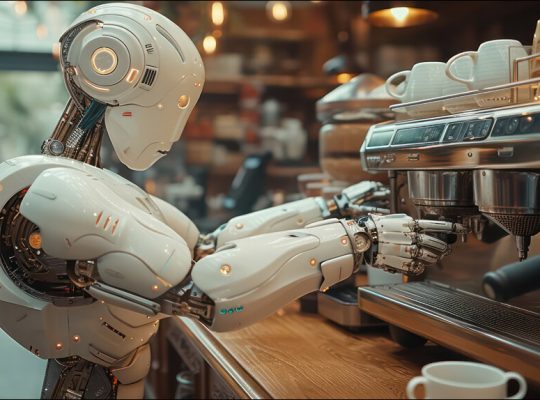AI-powered drive-thrus are rapidly transforming customer service in the Quick-Service Restaurant (QSR) industry. They offer a range of benefits aimed at improving efficiency, accuracy, and overall customer satisfaction, though they also present some challenges.
Here’s a breakdown of how AI is changing drive-thru customer service:
1. Enhanced Speed and Efficiency:
Faster Order Taking: Voice AI systems can process orders much quicker than humans, reducing overall service times. Some reports indicate reductions of 20-47 seconds per interaction. This means shorter lines and more cars served per hour, directly impacting revenue.
Reduced Wait Times: By streamlining the ordering process and optimizing kitchen operations through predictive analytics (e.g., anticipating peak hours and allocating resources), AI helps minimize bottlenecks and ensure food is ready by the time the customer reaches the window.
24/7 Availability: AI assistants can take orders around the clock, offering extended service hours without additional labor costs.
2. Improved Accuracy:
Fewer Errors: AI-powered voice recognition and natural language processing (NLP) are designed to accurately capture complex orders, even with various accents, background noise, or specific customizations. Studies suggest AI can achieve 95% or higher accuracy rates, compared to 80-85% for human operators.
Reduced Miscommunication: By understanding nuanced requests, AI minimizes the chances of incorrect orders, leading to greater customer satisfaction and reduced food waste (fewer remakes).
3. Personalization and Upselling:
Tailored Recommendations: AI systems can analyze customer data, including past orders, dietary preferences, and even real-time factors like weather, to suggest personalized menu items or special offers. This can significantly increase average ticket size and customer engagement.
Effective Upselling: AI is often more consistent and effective at suggestive selling than human employees, as it can be programmed to offer complementary items based on purchase history, potentially boosting revenue.
Dynamic Menu Boards: AI can dynamically update digital menu boards to promote high-margin items or special deals based on current conditions or customer demographics.
4. Operational Benefits:
Reduced Labor Costs: By automating routine tasks like order-taking and payment processing, AI allows QSRs to reallocate staff to other crucial areas like food preparation, enhancing overall efficiency and potentially reducing the need for a large workforce.
Optimized Staffing: AI can analyze drive-thru demand and optimize staff schedules, ensuring adequate coverage during peak hours and minimizing unnecessary labor costs during slower periods.
Data-Driven Insights: AI systems collect valuable data on customer behavior, order patterns, and operational efficiency, providing insights that can inform menu offerings, promotions, and marketing strategies.
Multilingual Support: Advanced AI speech recognition can accommodate customers speaking different languages, making service more inclusive.
Challenges and Considerations:
Despite the significant advantages, AI-powered drive-thrus face challenges:
Understanding Complex Requests: While improving, AI can still struggle with highly nuanced or unusual requests, leading to frustration if it misinterprets an order.
Customer Trust and “Uncanny Valley”: Some customers, particularly older demographics, may be hesitant to interact with AI and prefer human interaction. There’s also the “uncanny valley” effect where AI that is almost human-like, but not quite, can be unsettling.
Training AI Properly: AI requires extensive, diverse, and accurate data for training to perform effectively. Continuous updates and maintenance are necessary to adapt to new patterns and customer behaviors.
Lack of Personalization/Empathy: AI may lack the human touch, empathy, and ability to adapt tone and approach that human agents provide, especially in sensitive or unique situations.
Integration Issues and Cost: Implementing AI systems can be technically complex and costly, requiring seamless integration with existing point-of-sale (POS) and other restaurant systems.
Public Perception and “Viral Failures”: High-profile failures, like some early McDonald’s AI trials that struggled with accents or made bizarre suggestions, can lead to negative public perception and backlash.
The Future of Drive-Thru Customer Service:
The trend is towards a hybrid model where AI complements human staff rather than fully replacing them. AI will continue to handle repetitive tasks, gather data, and provide quick, accurate service, while human employees focus on more complex interactions, problem-solving, and delivering a truly personalized and empathetic experience. As AI technology advances, particularly in natural language understanding and contextual awareness, the drive-thru experience will become even more seamless, efficient, and tailored to individual customer needs.















